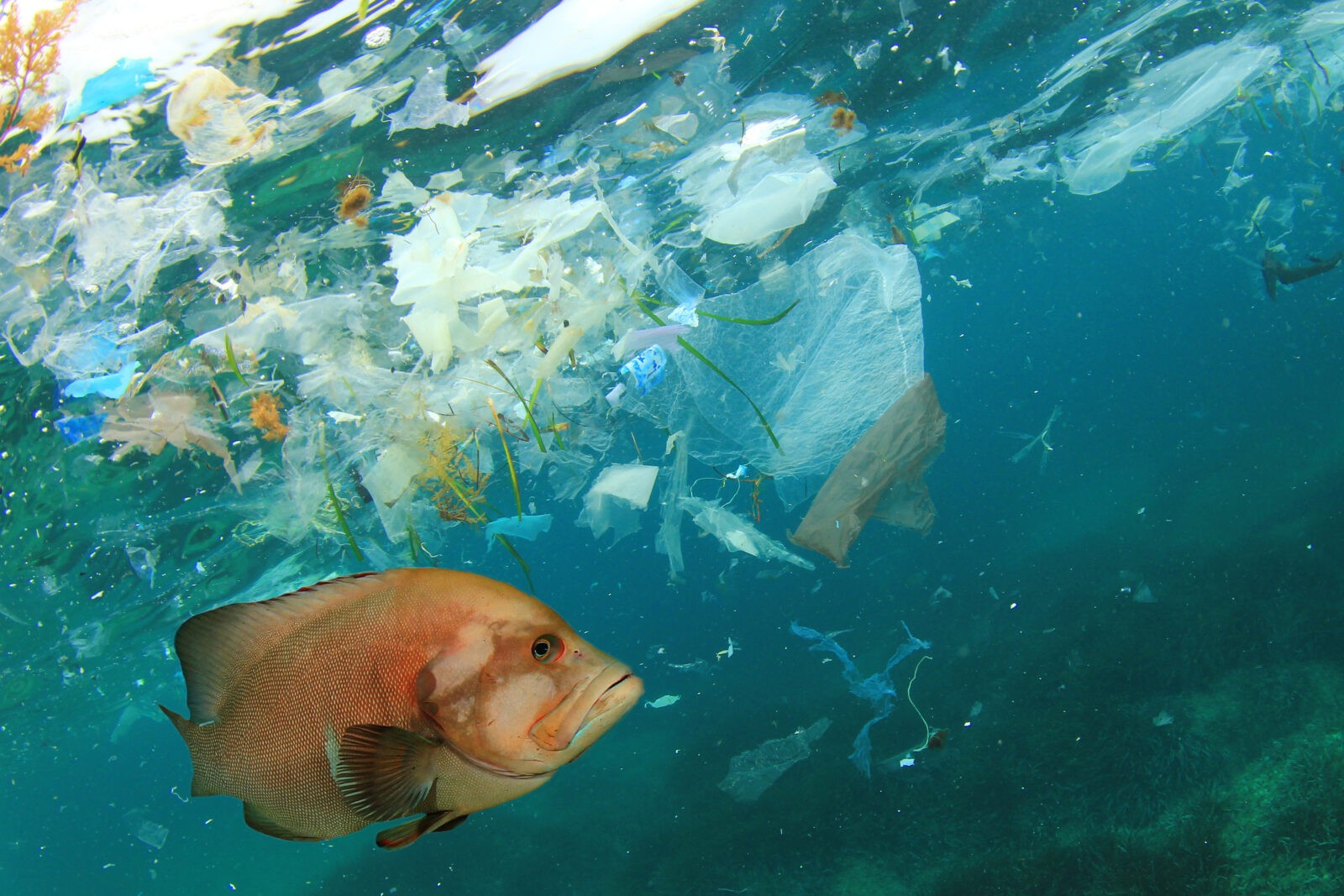To view our residential rental opportunities, please visit NewportRentals.com
To view our residential rental opportunities, please visit NewportRentals.com
To view our residential rental opportunities, please visit NewportRentals.com
To view our residential rental opportunities, please visit NewportRentals.com
Atlantic Menhaden
Menhaden weigh approximately 1 pound and grow to about 15 inches long at maturity. They have a lifespan of 10 to 12 years. Menhaden are filter feeders, with a diet mainly consisting of phytoplankton and zooplankton. Their schooling behavior and large population make them easy targets for predators such as striped bass, ospreys, and eagles. Menhaden are a significant source of Omega-3 fatty acids, commonly used in animal and human supplements.
Atlantic Menhaden
Menhaden weigh approximately 1 pound and grow to about 15 inches long at maturity. They have a lifespan of 10 to 12 years. Menhaden are filter feeders, with a diet mainly consisting of phytoplankton and zooplankton. Their schooling behavior and large population make them easy targets for predators such as striped bass, ospreys, and eagles. Menhaden are a significant source of Omega-3 fatty acids, commonly used in animal and human supplements.

Striped Bass
Striped Bass growth depends on their habitat; however, they can grow up to 5 feet long and weigh over 70 pounds. They can live up to 30 years. Striped Bass are anadromous, meaning they spend most of their lives in the ocean but return to freshwater to reproduce. Mature bass eat other fish, as well as invertebrates such as crabs and squid. Other names for the Striped Bass include Rockfish, Striper, and Linesider.
Striped Bass
Striped Bass growth depends on their habitat; however, they can grow up to 5 feet long and weigh over 70 pounds. They can live up to 30 years. Striped Bass are anadromous, meaning they spend most of their lives in the ocean but return to freshwater to reproduce. Mature bass eat other fish, as well as invertebrates such as crabs and squid. Other names for the Striped Bass include Rockfish, Striper, and Linesider.

White Perch
White Perch range in size from 0.8 ounces to 1 pound and grow to be 7-10 inches long. They can live up to 17 years. Mature adults consume aquatic insects, larvae, minnows, and fish eggs, while young White Perch mainly feed on zooplankton. White Perch are closely related to Striped Bass, both belonging to the same family, Moronidae (temperate basses). They are considered an invasive species, leading to competition and damage to native ecosystems.
White Perch
White Perch range in size from 0.8 ounces to 1 pound and grow to be 7-10 inches long. They can live up to 17 years. Mature adults consume aquatic insects, larvae, minnows, and fish eggs, while young White Perch mainly feed on zooplankton. White Perch are closely related to Striped Bass, both belonging to the same family, Moronidae (temperate basses). They are considered an invasive species, leading to competition and damage to native ecosystems.
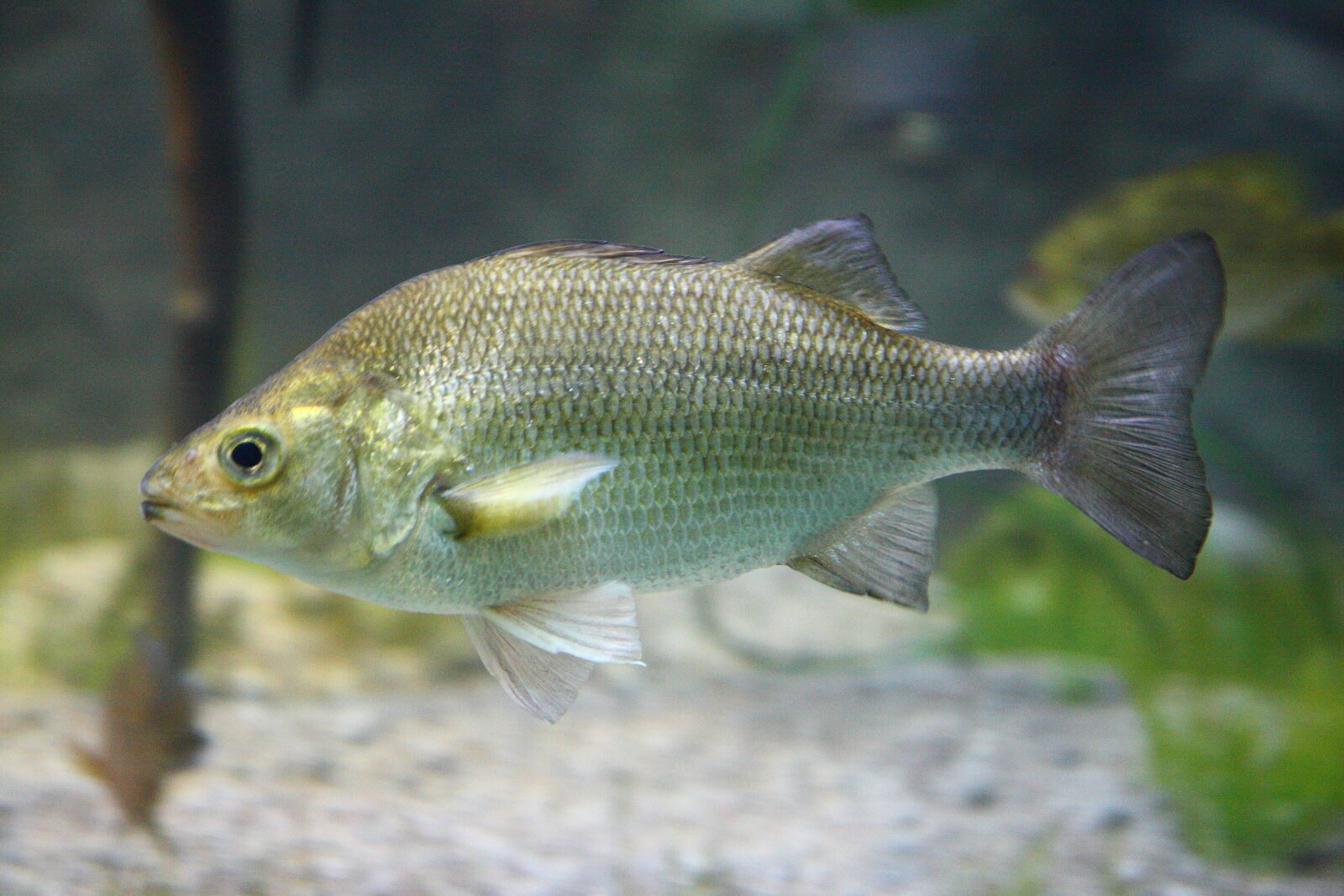
Blue Fish
Bluefish can grow to approximately 30 pounds and measure around 39 inches at maturity. They can live up to 12 years. With sharp teeth, they can consume larger prey, including squid and fish such as silversides and menhaden. Sharks, tuna, and billfish are their main predators.
Bluefish are also known as Tailor, Snapper, Baby Blues, Choppers, and Elfs. A “bluefish blitz” occurs when large schools of bluefish attack prey near the surface, causing the water to swirl and churn like a washing machine. This allows them to quickly and effectively grab their prey.
Blue Fish
Bluefish can grow to approximately 30 pounds and measure around 39 inches at maturity. They can live up to 12 years. With sharp teeth, they can consume larger prey, including squid and fish such as silversides and menhaden. Sharks, tuna, and billfish are their main predators.
Bluefish are also known as Tailor, Snapper, Baby Blues, Choppers, and Elfs. A “bluefish blitz” occurs when large schools of bluefish attack prey near the surface, causing the water to swirl and churn like a washing machine. This allows them to quickly and effectively grab their prey.
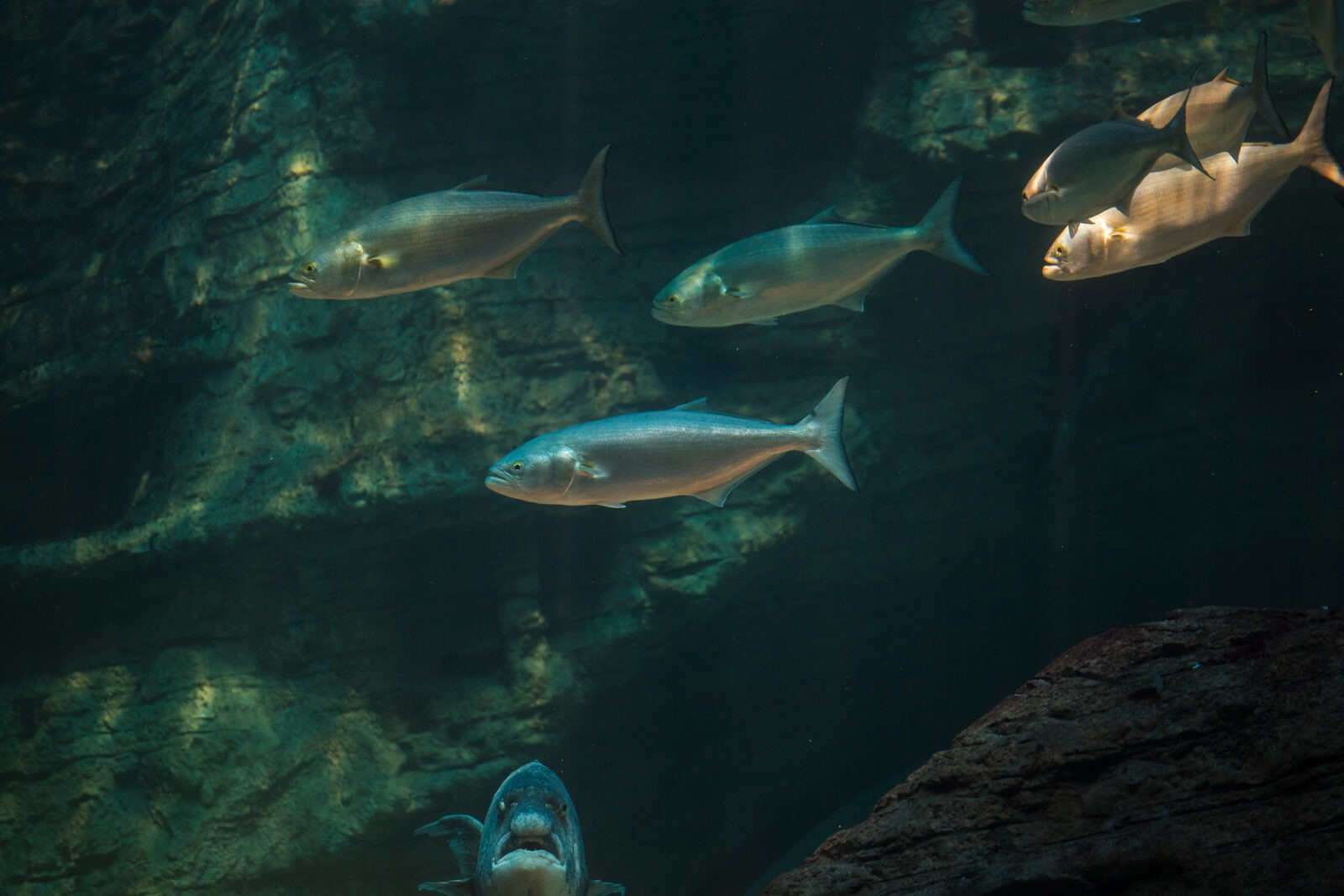
Winter Flounder
Winter flounder grow to approximately 2 feet long and can live for 15-18 years. They return to the place where they were born to spawn and reproduce. Winter flounders are bottom dwellers, feeding primarily on small invertebrates such as worms, shrimp, and clams, due to their small mouth structure.
Predators of winter flounder include fish such as Atlantic cod, monkfish, and spiny dogfish, as well as birds and marine mammals. They primarily feed during the day because they rely on sight. Their eyes are positioned on the right side of their body.
Winter Flounder
Winter flounder grow to approximately 2 feet long and can live for 15-18 years. They return to the place where they were born to spawn and reproduce. Winter flounders are bottom dwellers, feeding primarily on small invertebrates such as worms, shrimp, and clams, due to their small mouth structure.
Predators of winter flounder include fish such as Atlantic cod, monkfish, and spiny dogfish, as well as birds and marine mammals. They primarily feed during the day because they rely on sight. Their eyes are positioned on the right side of their body.
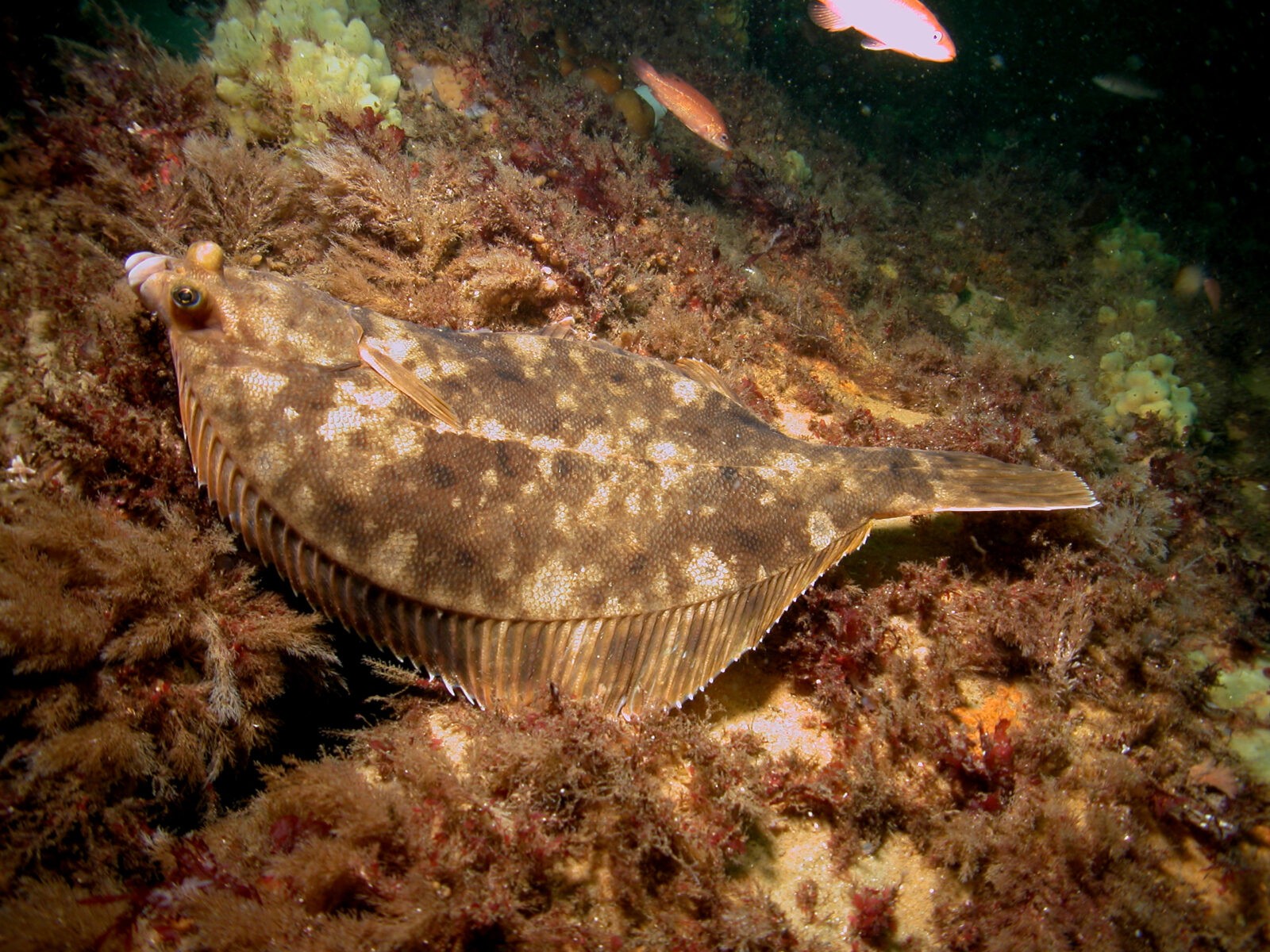
Summer Flounder
Summer flounder grow to approximately 2-3 feet long and live for 12-14 years. They are bottom dwellers, consuming a varied diet that includes both fish and invertebrates. Juveniles feed on zooplankton and small crustaceans, while mature flounder eat whatever food is most accessible and convenient.
Flounders can quickly change their skin color and patterns to better conceal themselves. Their eyes are located on the left side of their body.
Summer Flounder
Summer flounder grow to approximately 2-3 feet long and live for 12-14 years. They are bottom dwellers, consuming a varied diet that includes both fish and invertebrates. Juveniles feed on zooplankton and small crustaceans, while mature flounder eat whatever food is most accessible and convenient.
Flounders can quickly change their skin color and patterns to better conceal themselves. Their eyes are located on the left side of their body.
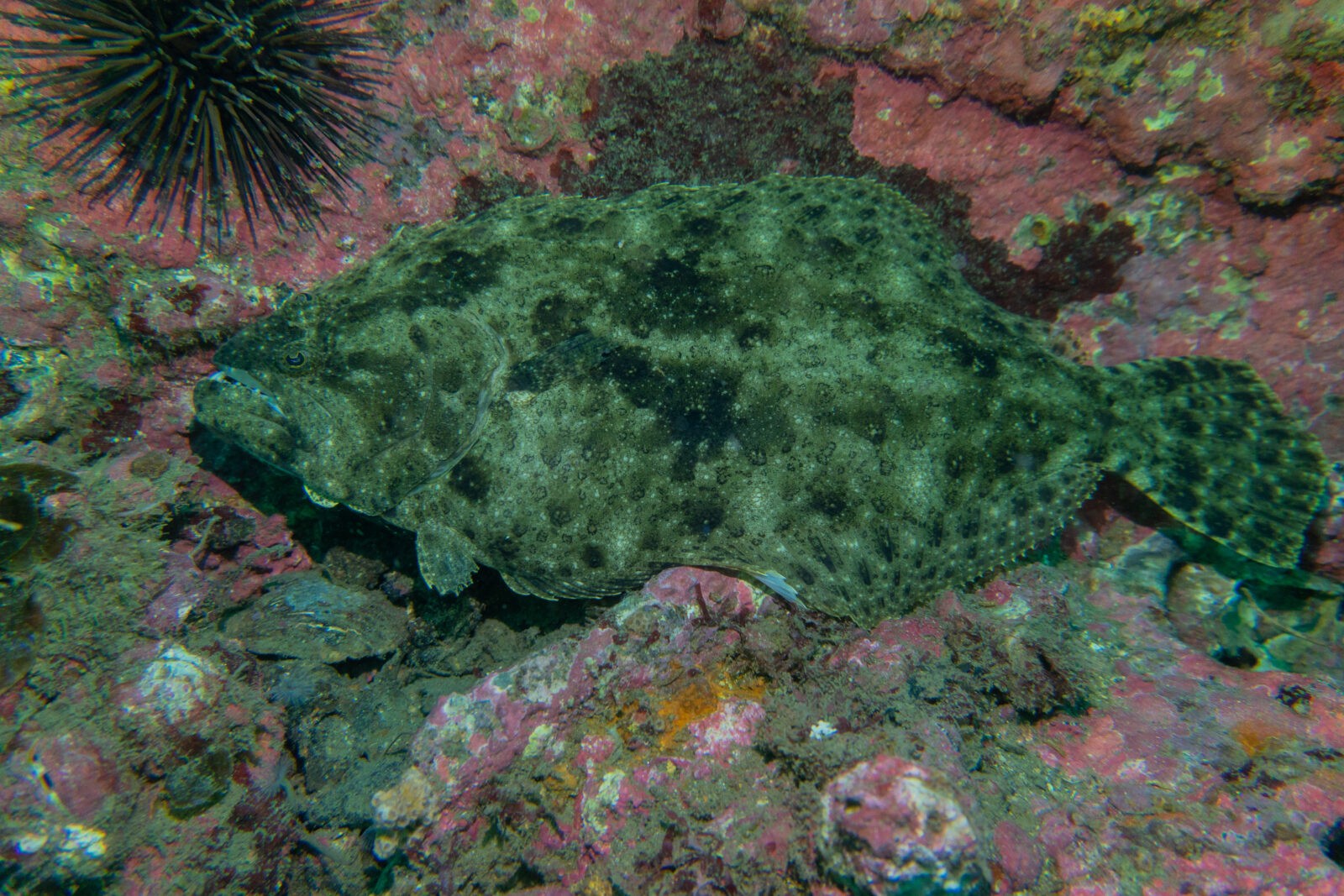
PSA
It is important to keep our water ways clean because aquatic plants and animals are directly impacted by water quality.
Polychlorinated Biphenyls (PCBs) in the Hudson River
PCBs, originating from industrial products and chemicals, were banned in 1979 but continue to persist in the Hudson River. Fish, particularly bottom feeders and predators, can accumulate PCBs in their tissues through contaminated sources such as the food chain or proximity to polluted sediments. Consequently, it is essential to exercise caution when consuming aquatic life caught in the Hudson River.
Environmental Responsibility: Litter Prevention
Littering pollutes water, disrupts ecosystems, and can potentially contaminate the food we consume. By refraining from littering and actively participating in cleanup efforts, we can protect both aquatic life and our own health. Let’s keep our waters safe.
Impact of Microplastics on Aquatic Life
Microplastics pose a significant threat to fish by obstructing digestion, impeding nutrient absorption, and increasing the risk of disease. This plastic pollution not only jeopardizes fish health but can also have adverse effects on human health if these fish are consumed.
PSA
It is important to keep our water ways clean because aquatic plants and animals are directly impacted by water quality.
Polychlorinated Biphenyls (PCBs) in the Hudson River
PCBs, originating from industrial products and chemicals, were banned in 1979 but continue to persist in the Hudson River. Fish, particularly bottom feeders and predators, can accumulate PCBs in their tissues through contaminated sources such as the food chain or proximity to polluted sediments. Consequently, it is essential to exercise caution when consuming aquatic life caught in the Hudson River.
Environmental Responsibility: Litter Prevention
Littering pollutes water, disrupts ecosystems, and can potentially contaminate the food we consume. By refraining from littering and actively participating in cleanup efforts, we can protect both aquatic life and our own health. Let’s keep our waters safe.
Impact of Microplastics on Aquatic Life
Microplastics pose a significant threat to fish by obstructing digestion, impeding nutrient absorption, and increasing the risk of disease. This plastic pollution not only jeopardizes fish health but can also have adverse effects on human health if these fish are consumed.
